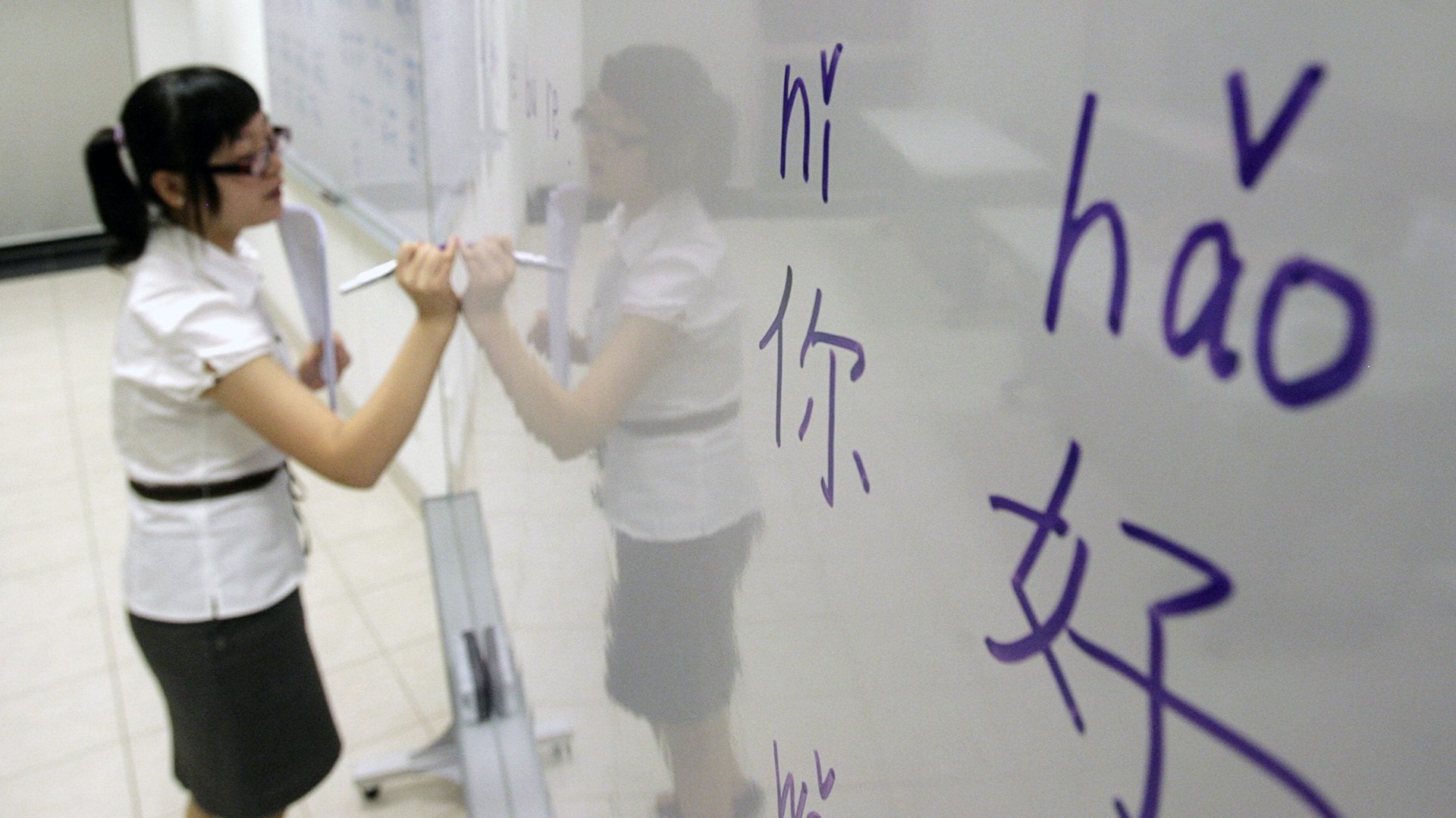Language classes in the US are finally useful
Language education in the United States is finally starting to look like it belongs in the 21st century.


Language education in the United States is finally starting to look like it belongs in the 21st century.
In the school year ending in 2005, a far higher percentage of US schools offered courses for Latin—a famously dead language—than for Mandarin, which has hundreds of millions of living speakers. That has changed dramatically in the past 10 years.
From 2005 to 2015, the share of US schools offering major Western languages like Spanish and German fell. Chinese has overtaken Latin. And the “other” category—comprising Arabic, Japanese, and plenty of others—nearly caught up to French. This data is according to a survey (pdf), published last year, of 10,000 American schools. (Spanish is excluded from the chart below because its share of around 70% is incomparably greater than that of other languages.)
There’s another way to see the trend of American schools ditching Western languages in favor of a more global mix. The survey asked schools which languages they plan to add or remove courses for. The study added these up to find the net expected change in language teaching. It showed planned rises in non-Western languages like Chinese, Arabic, Korean, and Russian, and drops in French and the like.
These are signs that language education is modernizing in the US. It is increasingly admitting the political and cultural importance of Asia and the Middle East.
The data also show that language education is diversifying, rejecting its colonial past. It is no longer just about the biggest European languages. The “other” category 1 includes a vast number of minority languages, including several indigenous to North America. There are also plenty of languages in there that represent large immigrant communities in the US, like Hmong, Tagalog, and Vietnamese.
In spite of all that, one Western language still reigns supreme: Spanish remains the most-taught language by far. But that’s the way it should be. Unlike French or German, it is the de facto second language of the United States, spoken at home by over 40 million Americans.
There is still a ways to go before US schools teach languages in proportions that reflect their use beyond the classroom. French does not deserve to be so much higher than Asian languages with massive amounts of speakers, like Japanese, Hindi, Indonesian, Bengali, and of course Chinese. The “other” category should continue to increase, with schools offering more courses relevant to local immigrant or indigenous communities.